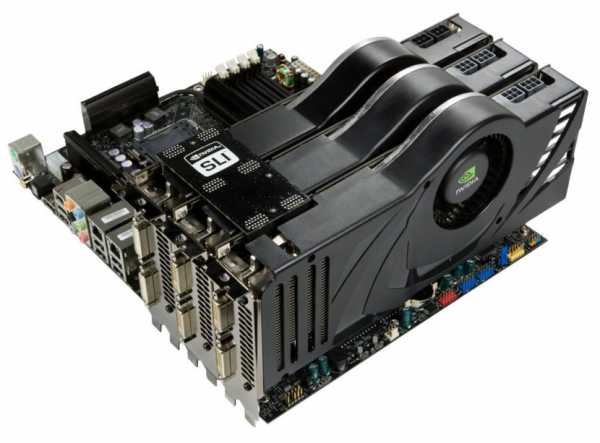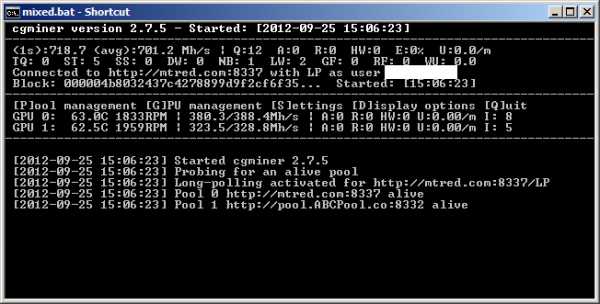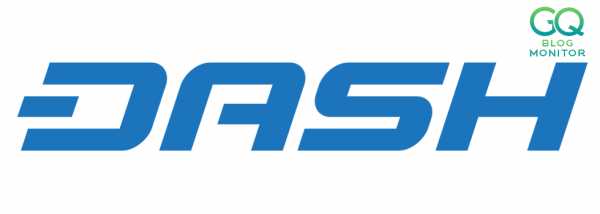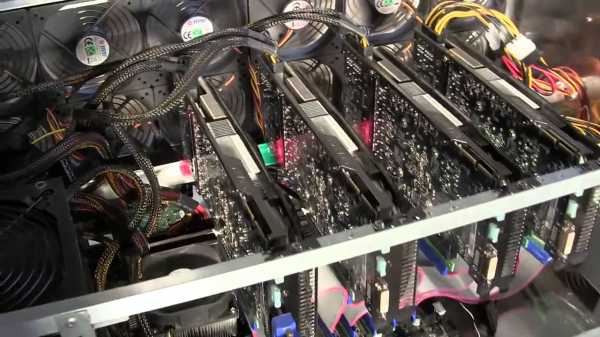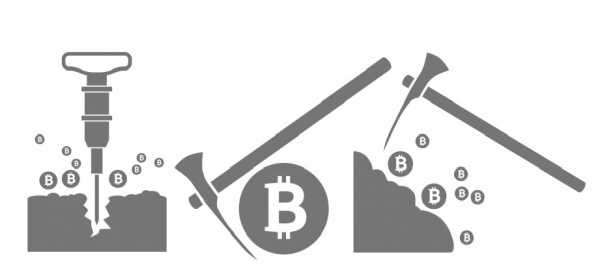Майнинг bitcoin mac os
Bitcoin Mining on Mac OS X – cgminer & bfgminer
In my previous two posts in this series I introduced two easy-to-use bitcoin miners for OS X: BitMinter and GUIMiner. However, while these miners are relatively easy to install and use, they do not offer the best performance when it comes to hash rates. For that you’ll want to look at cgminer and bfgminer. These are native C miners and, paired with the right kernels, their performance exceeds the other two miners by quite a wide margin.
cgminer & bfgminer
The bfgminer project is a fork of the cgminer project. Now, I have no dog in this fight, but my understanding is that the teams aren’t on great terms. However, I have had good luck with both tools and have worked with both authors in order to fix a crash (cgminer, bfgminer) related to multiple GPU’s on OS X and have no complaints whatsoever. Both miners offer similar performance in my experience.
Installation
1. XcodeTo get started, you will need to install the Xcode. Xcode is a free download from the Apple App Store.

2. Command Line ToolsNext you’ll need the Xcode Command Line Tools. Launch Xcode and then click the Xcode>Preferences menu item. Click the Downloads tab and then click Install next to Command Line Tools.
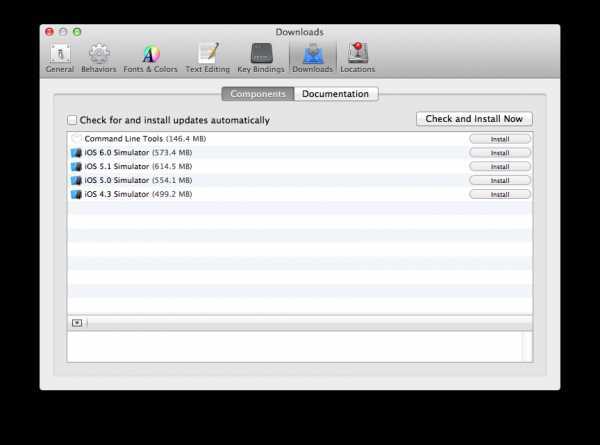
If the text next to Xcode Command Line Tools says Installed, carry on to the next step.
3. HomebrewNext you’ll need to install Homebrew. Homebrew is a package manager for OS X that provides a sane way of installing *nix tools, libraries, and their dependencies. It is similar to MacPorts for OS X or apt for Linux. Installing Homebrew is super-easy. Open up Terminal.app and run the following command (from the Homebrew homepage):
ruby -e "$(curl -fsSL https://raw.github.com/mxcl/homebrew/go/install)"
After you install Homebrew, make sure you run the following command (as the installer should instruct you):
brew doctor
Make sure you address any errors or warnings before proceeding as they may prevent the miners from installing.
4. MinersIn my previous post I indicated that it was necessary to compile cgminer and bfgminer from their source code in order to install them on OS X. While that was necessary at the time, after some reading and experimenting with Homebrew I was able to create packages (called formulas with Homebrew) for installing cgminer and bfgminer on OS X 10.8. Once Homebrew is successfully installed, you can run the following commands to install cgminer and bfgminer:
brew tap nwoolls/xgminerbrew install cgminer
or:brew tap nwoolls/xgminerbrew install bfgminer
If you specify the –HEAD (two dashes) parameter for brew install then the latest source-code will be pulled for the miner from Github rather than using the latest official release.
You can visit the Github repository to view the package contents.
If you run into errors installing the above formulas you can try running brew install with the –debug –verbose parameters to find where things went wrong. I’d also recommend using brew doctor to diagnose any issues.
Usage
Both cgminer and bfgminer are command-line utilities. You can either run them without any command line parameters and fill in the prompts for mining pool URL and credentials or you can use the following format to specify your pool:
cgminer -o http://pool.url:port -u username -p password
or:bfgminer -o http://pool.url:port -u password -p password
If you have multiple graphics cards you’ll want to use the –no-opencl-binaries parameter with bfgminer to avoid a crash on startup. This is not necessary with cgminer as it detects OS X and applies the same workaround automatically.
Other notable command line parameters are -I (for intensity) and -k (for kernel). If you pass in -I d then the miner will use less resources so you can use your PC (think D for Desktop). Passing in -I 9 is a safe value for having the miner use as much of your graphics resources as possible to mine. Your PC will be much less responsive. Finally, -k lets you specify a kernel. I find on OS X that using -k diablo gives the best performance. So, my command-line using cgminer with the BitMinter pool would look something like this:
cgminer -k diablo -o http://mint.bitminter.com:8332 -u username_workername -p password -I 9
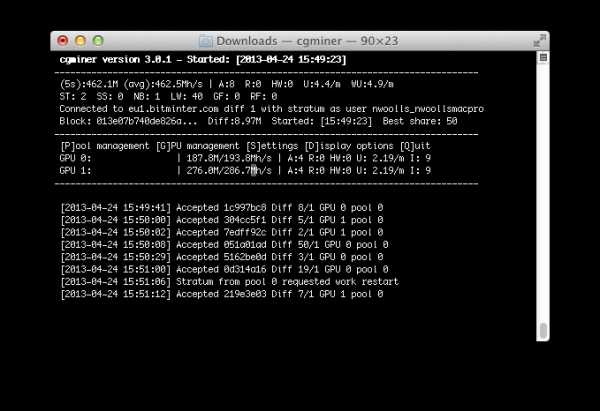
And for bfgminer:
bfgminer -k diablo -o http://mint.bitminter.com:8332 -u username_workername -p password -I 9 --no-opencl-binaries
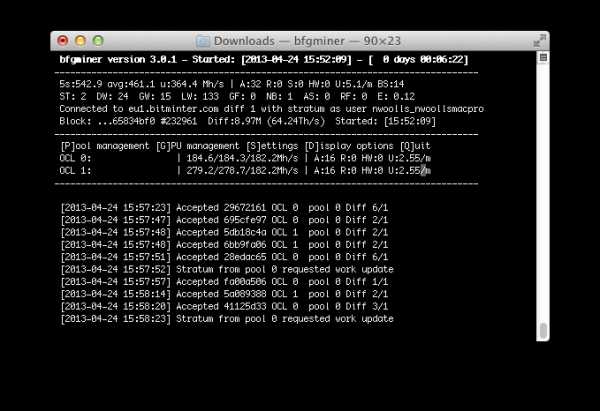
Refer to the projects on Github for full documentation of the available command-line parameters.
As you can see from the average in the upper-left of each miner’s output, with cgminer and bfgminer I average 460 Mh/s. Compare that to 400 Mh/s with GUIMiner and 370 Mh/s with BitMinter and you can see why these command-line miners are preferred over their GUI counterparts.
Conclusion
These are exciting times for crypto currency, whether you’re a geek or a speculator or merely a bystander. And, while OS X is pulling up the rear when it comes to supported OS’s for bitcoin mining, hopefully I’ve demonstrated some viable options for getting your feet wet with mining on OS X. BitMinter is a great option for getting started, as it gives you both a bitcoin mining pool with low fees and ready-to-use mining software. GUIMiner is a nice option for improved performance and flexibility in mining pool choice. And, if you’ve decided mining is your thing and you want the absolute best performance out of your rig, you can’t go wrong with cgminer or bfgminer.
UPDATE #1: Since my original post I’ve had some great help from Bitcoin community member and blogger Kerry on how to get binaries such as cgminer and bfgminer packaged in a self-contained way. If you are interested in the shell scripts that make this possible you can check them out on Github here. I have submitted these scripts to the authors of both cgminer and bfgminer so, in the future, we may see official OS X binary distributions.
In the meantime, if you’d like to try these out instead of following the instructions above, you can download them from the Releases page here.
UPDATE #2: Starting with version 3.8 cgminer no longer includes any support for GPU mining, so you will need to use version 3.7.2 of cgminer if you intend to mine using your GPU. Additionally, bfgminer now requires an additional argument in order to enable GPU mining. If you wish to use bfgminer for GPU mining you will need to add the following argument:
--S opencl:autoblog.nwoolls.com
Bitcoin Mining on Mac OS X – ASICs
While it’s been possible to purchase ASICs (Application Specific Integrated Circuits – chips specifically created to mine Bitcoins in this case) for several months, it has been a difficult and risky process involving auctions on forums with one-way exchanges of money for promises of future hardware. However, recently ASICMINER has made it much easier to purchase their Blades and USB miners. You can pick up one of the USB ASIC miners for around $90 USD (at current exchange rates). One of these will hash at around 333 Mh/s at a fraction of the power usage of modern GPUs.
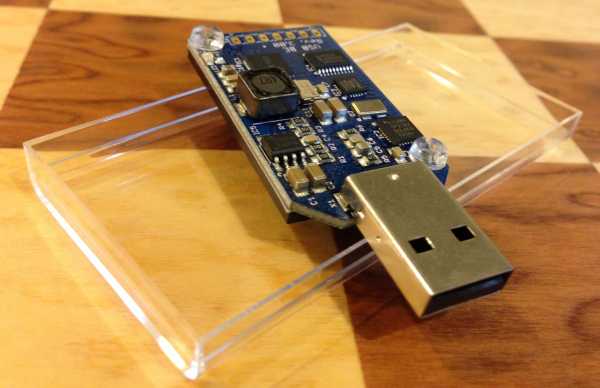
Installation
To get started using a USB ASIC under OS X, such as the Block Erupter from ASICMINER, you will first need to install either cgminer or bfgminer. You can refer to my previous article for details on installing cgminer or bfgminer under OS X. The basic steps are:
- Launch Terminal.app from Spotlight or your Applications folder
- Install Homebrew by entering the following command:ruby -e "$(curl -fsSL https://raw.github.com/mxcl/homebrew/go/install)"
- Run the following command and fix any reported issues:brew doctor
- Tap this Homebrew repostory so that you can install packages from it:brew tap nwoolls/xgminer
- Finally, install either cgminer or bfgminer:brew install cgminer
If you’d like to install the miner using the latest source from Github rather than the latest official package, use the –HEAD (two dashes prefix) parameter, e.g.:
brew install bfgminer --HEAD
NOTE: if you are going to use bfgminer, at this time you must use the above –HEAD parameter to get the latest changes from Github. Otherwise USB devices may not be recognized automatically.
Driver Installation
If you are using bfgminer you must install the CP210x USB to UART Bridge VCP driver found here. This driver will break USB support in cgminer. Click here for instructions on removing the driver. If you get a page saying your session timed out, visit the main knowledge base site first, and then navigate to the removal instructions. I’ve also reproduced their instructions below:
To uninstall the VCP driver from a Mac OS machine, just drag the driver to the trash from the System/Library/Extensions folder (SilabsUSBDriver) and then reboot the machine.
To verify if a driver is present, plug in a CP210x device and check the /dev directory for a device named “tty.SLAB_USBtoUART”. If this is not present, it means no VCP driver is active, or that the CP210x device has a VID/PID combination that does not match the driver installed. The VID/PID can be found in the device listing in the System Profiler (even if a corresponding driver is not installed).
Detection
Once you have successfully installed one of the above Bitcoin miners, use the following commands to probe for the ASIC USB devices:
cgminer --ndevs
The above command should show USB details for each Erupter ASIC:
[2013-07-01 17:16:30] USB all: found 18 devices - listing known devices.USB dev 0: Bus 58 Device 2 ID: 10c4:ea60Manufacturer: 'Silicon Labs'Product: 'CP2102 USB to UART Bridge Controller'.USB dev 1: Bus 93 Device 2 ID: 10c4:ea60Manufacturer: 'Silicon Labs'Product: 'CP2102 USB to UART Bridge Controller'[2013-07-01 17:16:30] 2 known USB devices
For bfgminer, use the following command:
bfgminer -S all -d?
The bfgminer output should show ICA devices for the Erupter ASIC:
[2013-07-01 17:15:12] Started bfgminer 3.1.1[2013-07-01 17:15:17] Devices detected:[2013-07-01 17:15:17] 0. OCL 0 (driver: opencl)[2013-07-01 17:15:17] 1. OCL 1 (driver: opencl)[2013-07-01 17:15:17] 2. ICA 0 (driver: icarus)[2013-07-01 17:15:17] 3. ICA 1 (driver: icarus)[2013-07-01 17:15:17] 4 devices listed
Mining
Finally, once you have ensured the miner is recognizing your ASIC, you can start mining with it. You can start cgminer without any special parameters:
cgminer -o hostname -u username -p password
Or start bfgminer with the -S all parameter:
bfgminer -o hostname -u username -p password -S all
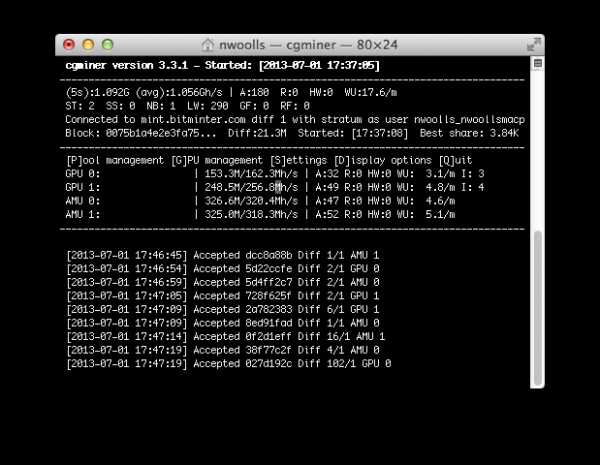
If you run into any issues you can leave comments below. However, if your issues are specific to cgminer or bfgminer you can find specific forum threads for them here and here.
UPDATE: Several readers have asked how to mine using only their ASIC devices and not their GPUs. Both cgminer and bfgminer support the –disable-gpu (two dashes prefix) argument:
cgminer -o hostname -u username -p password --disable-gpubfgminer -o hostname -u username -p password -S all --disable-gpu
blog.nwoolls.com
How to Mine Bitcoin on a Mac
Bitcoin is a decentralised crypto-currency; computers around the world constantly mine for bitcoins by solving complex mathematical problems. Once a certain number of problems have been solved, a block of bitcoins is released.
The value of bitcoins has shot up since 2009 (though it has come back down from a peak of around $1,000 per coin to about $500 per coin). This spike in value, as well as the resulting media attention, has resulted in a lot of interest in mining bit coins.
In this tutorial I’ll show you how to get started mining bitcoins with a Mac.
Reference
If you want to find out more about Bitcoin, or set up a Raspberry Pi as an additional miner, refer to the following tutorials:
Mining in Brief
Bitcoins are mined by computers solving incredibly complex mathematical equations, or hashes. When enough hashes have been solved, and the number required is always getting larger, a block of 25 Bitcoins–approximately 15,000 dollars worth at today’s exchange rate–is released.
Whoever solved the final hash gets the whole block. This all makes Bitcoin mining hyper-competitive with miners competing to solve more problems faster than their peers to increase their chances of getting a block.
The speed of a particular piece of mining hardware is measured in MegaHashes per second (MH/s), or if it is powerful enough, GigaHashes per second (GH/s). The world of Bitcoin mining is now dominated by specifically designed ASIC chips. These custom chips are orders of magnitude faster than CPU or GPU based miners and are available in USB devices that connect to a Mac.
My NVIDIA GPU averages a speed of around 25 MH/s while dedicated hardware such as this Bitcoin Miner from Butterfly Labs can get speeds of 10 GH/s for around the same price. This is to say nothing of the super high speed hardware available for thousands of dollars.
The Butterfly Labs Monarch can crack 600 GH/s. It also costs several thousand dollars!Bitcoin mining is also increasingly done in pools. A pool is a group of miners who work together to increase their chances of finding a block. The block is shared with all the miners in the pool, in proportion to the amount of hashes they solved, regardless of who actually found it. If you are mining by yourself, you could go years without ever finding a block, while, if you join a pool, you will at least be guaranteed a small, but steady, pay out.
Why You Shouldn’t Mine Bitcoin With a Mac
It was once possible to profitably mine bitcoins with a desktop computer, however, you will now end up spending far more on electricity bills than you ever make mining. Macs are no exception to this. Unless you are prepared to invest in specialised hardware, at the bare minimum something like Butterfly Labs’ 10 GH/s Bitcoin Miner, your returns are going to be miniscule.
Even if you join a pool, your share will likely amount to a few cents per day at most.
Why You Should Mine Bitcoin With a Mac
The future of Bitcoin is unclear. It is running into regulation issues, monopoly problems and over-mining. There are also some fundamental flaws with Bitcoin that make it’s use as a currency going forward questionable. Despite this, the ideas raised by Bitcoin are likely to become increasingly important.
Bitcoin, in principle, does for financial transactions what email did for communication–it makes it fast, free and available to all. Other crypto-currencies are being created that correct many of Bitcoin’s issues.
Crypto-currencies are something worth learning about. I am a firm believer that the best way to learn about something is to dig in and get your hands dirty. With Bitcoin, this means that you should engage in some unprofitable Bitcoin mining using a Mac!
Also, mining Bitcoin is fun. As I write this tutorial, my GPU is busy cracking hashes. By the time I am finished, I’ll probably have earned two or three hundredths of a cent. That’s kind of cool!
Prerequisites
To mine Bitcoin on a Mac you’ll need a wallet with a wallet address. Refer to the Tuts+ tutorial that teaches how to set up the wallet service MultiBit. I also like MultiBit and suggest you download it from the MultiBit website. It is simple to set up but if you have any difficulties check out the tutorial.
You also need a Mac with a discrete GPU. This excludes all MacBooks bar the top 15-inch MacBook Pro with Retina display, and some models of 21.5-inch iMac. If your Mac doesn’t have a discrete GPU, you will need to pick up some of the external mining hardware described later on.
Joining a Pool
The best way to casually mine is to join a pool. Unlike mining solo, you will at least get a Bitcoin balance above zero! Slush’s pool is one of the most popular–they average more than one block discovered every day so you are guaranteed a frequent, small payout if you join in. There processing fee is also low–only 2%.
Visit the Slush’s pool site and sign up. You will need to confirm your email address. Once you are signed up you will be provided with your first worker username and password. Take these down. A worker is simply an individual mining computer.
Add your MultiBit wallet address to the Bitcoin address: section on the My account page and click Save. You can also lower the Send threshold–one coin requires quite a bit of mining.
The account page tracks how much your workers have contributed to the pool’s current round as well as your total earnings.
Mining Bitcoins With Asteroid
Asteroid is a free, Mac-friendly GUI frontend that makes it super easy to mine Bitcoins. Many other solutions require knowledge of the command line. Asteroid is just a regular app.
Download a copy from the Asteroid website, drag it to the Application folder and open it.
Asteroid comes preconfigured with the settings for the most popular Bitcoin mining pools. From the dropdown menu select Bitcoin.cz (Slush’s pool) and enter the Worker username and Worker password you took down earlier. Click Accept to join the pool.
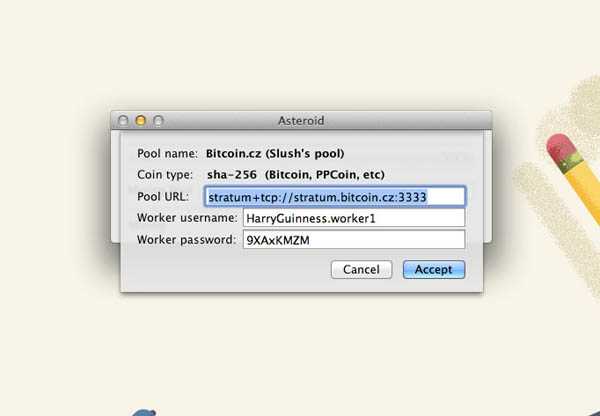 Joining Slush's pool.
Joining Slush's pool.Asteroid now begins mining Bitcoins for you. You can see the hashes being solved per second by each device as well as the overall speed of your Mac. Your GPU should be listed along with any additional mining hardware you have.
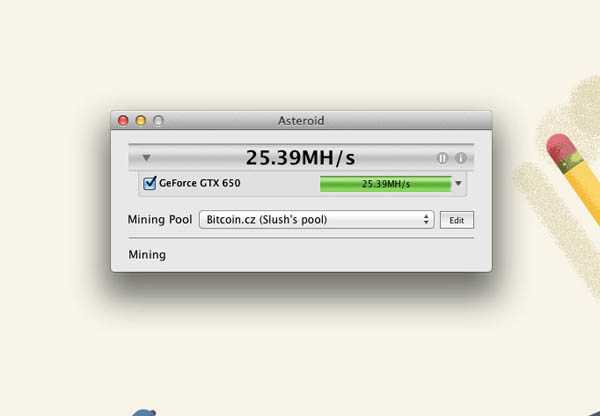 Asteroid in action!
Asteroid in action!Mining Other Crypto-Currencies
Bitcoin is not the only crypto-currency. There are many other competing currencies that have a fraction of Bitcoin’s value.
You should consider mining a Bitcoin alternative–mining is far less competitive for them so you will see a larger return, at least in terms of coins, than with Bitcoin.
Asteroid also supports mining Litecoin, one of the leading competitors to Bitcoin, and Dogecoin, the semi-joke, meme-based crypto-currency.
Dedicated Hardware
If you are serious about mining Bitcoins, or if your Mac doesn’t have a GPU, you will need to invest in dedicated mining hardware.
The high end of dedicated mining hardware is just as competitive as mining itself. You can spend thousands of dollars to get the best available only to have something even better come out a short while later.
BitcoinX maintains a list of mining hardware representing some of the best, high end mining kit. If you want to get involved in mining for profit, this is a good place to start.
If you are merely trying to supplement your GPU, or mine with a system that doesn’t have one, the USB based Antminer U2 is available for under 30 dollars, is supported by Asteroid and provides speeds of around 2GH/s.
Conclusion
Unless you are prepared to invest in dedicated tools, mining Bitcoins with a Mac is never going to be profitable; however, it can be a fun learning exercise. Crypto-currencies are only going to become more important and it is worth understanding what they are and how they work. The software required is all free so the cost of playing around with mining is minimal.
In this tutorial, I’ve shown you how to get started mining with Asteroid on a Mac and explained why you may, or may not, want to do it. I’ve also covered some of the dedicated hardware and other crypto-currencies available. If you have any questions, or are a dedicated miner cracking millions of hashes a second with a Mac, please let me know in the comments below.
computers.tutsplus.com
How to mine Bitcoin with your Mac
(Photo: Jason O'Grady)Apple stock?
Twitter stock?
How about Tesla?
Pfft. Forget about them. Bitcoin is where it's at.
Bitcoin is a crypto currency that's been exploding in value since the Chairman of the Federal Reserve, Ben Bernanke said that it "may hold long-term promise" at last week's U.S. Senate hearing on the Potential Risks, Threats, and Promises of Virtual Currencies (which aired on C-SPAN). Other U.S. regulatory power houses (including the Treasury and Department of Justice) agreed.
It's not without controversy, however. Bitcoin was the currency of choice at former Internet drug bazaar Silk Road and remains the currency of choice of crypto locker hackers that hold people's computers hostage for money. But don't let that discourage you.
When I first researched Bitcoin (at the end of 2012) the price of a single Bitcoin was $13.50. In May 2013 it was selling for around $200/BTC. When I finally got around to buying some Bitcoin (on November 10) it had jumped to $460/BTC, and as I write this on November 26 the price has skyrocketed to $920/BTC. Not too shabby.
But enough on the background of Bitcoin, there's plenty of places to read about that. Let's get down to business and how to mine Bitcoin using your Mac.
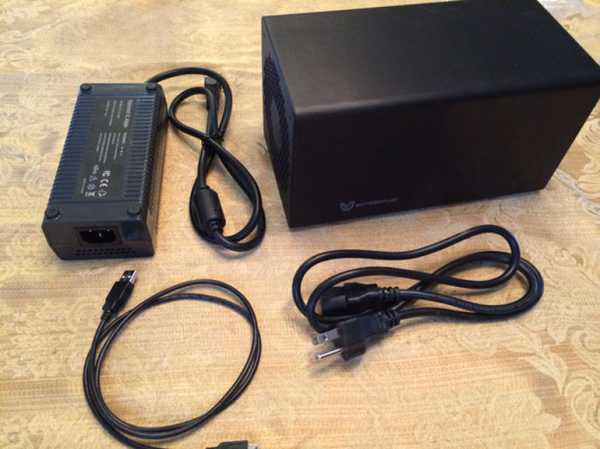 (Photo: Jason O'Grady)
(Photo: Jason O'Grady)First, some bad news. While it's technically possible to mine for BTC using your Mac's GPU, it's not profitable. The hashing difficulty has increased to a point where you'll spend more on electricity than you'll get in Bitcoin in return. It's possible that the new Mac Pro (with it's dual AMD FirePro GPUs) might be able to mine for Bitcoin profitably, no one's benchmarked its hashing performance yet.
The good news is that you can purchase purpose-built mining hardware that will mine Bitcoin. While potentially profitable, there are several caveats. ASIC mining hardware is backordered, expensive, power hungry and loud. I backordered a 5Gh/s and a 25Gh/s ASIC (both pictured above) from ButterFly Labs in May and just got them this month, a six month backorder. If you're serious about getting into Bitcoin mining I suggest that you either purchase a BFL miner on eBay, or place a pre-order for one of the rip-snortin' fast 300 or 600Gh/s miners that Butterfly Labs will begin shipping in January.
If I haven't scared you off and you're still reading, here's what you need to do to begin mining for Bitcoin on your Mac.
Step 1. Create a wallet
Create a Bitcoin wallet at BlockChain.info and note your Bitcoin address. You'll need it in step 2. A wallet is used to store your Bitcoin and you can have as many wallets as you want. Remember that security is paramount and losing your credentials is akin to losing your physical wallet, except that no one's going to return it to you. Also, if you lose your credentials, your Bitcoin is gone forever, there's no way to recover your password. There are many options for online and offline wallets and an offline wallets are more secure, but if you're starting at zero an online wallet is fine for the time being. (If you plan on purchasing Bitcoin with real money, then I recommend that you educate yourself on the risks and store your Bitcoin in an offline wallet that is backed up.)
Step 2. Join a pool
Join a mining pool, like BitcoinCZ Mining (aka Slush's pool). Bitcoin pooled mining is a way for multiple users to work together to mine Bitcoin, and to share the benefits fairly. Create and record logins and passwords for as many workers as you need. If you purchased ASIC hardware to run on one Mac, one worker is sufficient. If you want use a bunch of computers in your home or office to mine, then create a worker account for each machine that you plan to enlist.
Step 3. Install the mining software
There aren't a lot of Bitcoin mining clients for the Mac and if you uncomfortable with the command line/Terminal (or would just like a little more feedback) I recommend a free OS X mining client called MacMiner. Download it, install it and configure it to send rewards to your BlockChain wallet and to work in the pool that you joined. Here's how.
Step 4. Connect your ASIC miner to your Mac's USB port.
Step 5. Configure Mac Miner's Pool Settings
- Open the FPGA/ASIC Miner window (from the View menu).

- Click on "Pool Settings" in the upper-left of the FPGA/ASIC Miner window.
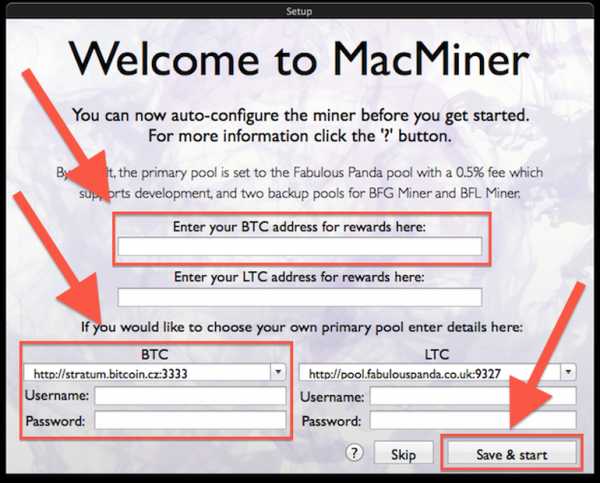
- Enter your BTC address for rewards (from your wallet in Step 1)
- In the BTC area (bottom left) select your mining pool from the drop down menu
- Enter your miner username and password from your mining pool (Step 2 above)
- Click "Save & start"
Step 6. Configure Mac Miner's Miner Settings
- Click on "Miner Settings" in the FPGA/ASIC Miner window
- Enter "-S all" (without the quotes, capital "P") in the Devices/manual flags field
- Click Apply
Step 7. Click Start
In the FPGA/ASIC Miner window (in Step 5 above).
Step 8. Watch the Bitcoin roll in
To monitor your progress, log into your mining pool account and watch the "My Account" page. I have Slush's Pool set to transfer my BTC rewards to my wallet every 0.1 BTC (the "Send threshold" below) and as you can see by the screenshots, I've been getting 35-36Gh/s hashing performance from my two BFL miners pictured above. At 36Gh/s I've been able to mine 0.1 BTC every four days and I'm on a pace to mine 1BTC/40 days at the current difficulty level.
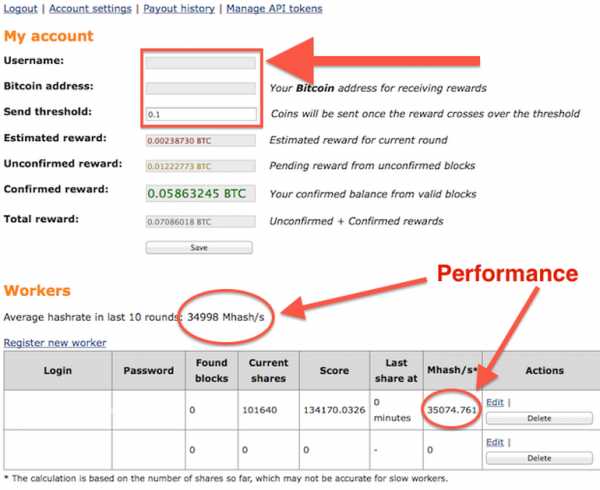
The next generation of mining hardware from Butterfly Labs are a pair of PCI cards based filled with 28nm ASICs that are capable of mining at 300Gh/s ($2,800) and 600Gh/s ($4,680) respectively. Orders places today for the new "Monarch" cards are expected to begin shipping in February 2014. KnCMiner, based in of Stockholm Sweden, is taking pre-orders for a 3 Terahash miner called Neptune, only 1200 units are being made and one will set you back $12,995. According to the founders, Neptune can mine 2.1 Bitcoin per day at current difficulty levels.
Happy mining!
Update 2013-1203: I've switched from using MacMiner to Asteroid, a new Bitcoin mining client for Mac. More on Asteroid in a future blog post.
FAQ
Q: Can I set up MacMiner on a bunch of computers and mine BTC that way? (ala SETI@home)
A: While you can, it's not economically feasible with the current level of hashing difficulty and the cost of electricity.
Q: Where can I buy Bitcoin?
A: If you're in the U.S., you can buy BTC at Coinbase.com. They're US-based and raised $5M in venture capital in May 2013 (WSJ article)
Q: Where can I purchase ASIC mining hardware?
A: I purchased two minging rigs (pictured above) from Butterfly Labs and they rock -- to the tune of 36Gh. Note: BFL is running a Black Friday Special with 25 percent off mining hardware Friday only (in your local time zone). Minr.info maintains a list of currently discussed ASIC bitcoin mining hardware.
Q: Where can I follow what's happening in the Bitcoin community?
A: I recommend the Bitcoin Talk forums, Bitcoin sub-Reddit, The Genesis Block, CoinDesk, and Bitcoin on Stack Exchange.
www.zdnet.com
Bitcoin Mining on Mac OS X – BitMinter
The media is buzzing these days with stories about bitcoin, the most popular of available crypto currencies. First proposed in 2008 and implemented in 2009, recent bubbles and crashes in the exchange-rate for the bitcoin have everyone talking about it. And while the volatility and investment possibilities of bitcoin are intriguing, to me the truly interesting aspect is the role of the bitcoin miner.
As the name implies, bitcoin miners – which are generally either computers or specialized hardware – are responsible for mining new bitcoins. However, that is not their primary function. Those individuals running bitcoin mining software are, in effect, running the bitcoin transaction processing network in a peer-to-peer fashion. You can think of this as another distributed computing system like SETI@home and Folding@home. By using your computer hardware’s spare cycles you can contribute to a growing, global, distributed crypto currency. If that’s your thing.
And you can actually come out ahead financially. Now, arguably, this won’t last much longer. There is specialized hardware on the horizon that may make it much less profitable to mine bitcoins. But, for the time being, if you already have a Radeon 5x series or higher GPU then there’s a decent chance you could do this and make a couple of dollars a day (US, not bitcoin). Check out this hardware chart and this calculator for more information.
As it happens the most recent Mac Pros ship with Radeon 5x series GPU’s and can use 6x series Radeons with OS X Lion. However, most of the bitcoin mining software is aimed at Windows and Linux. There really aren’t a lot of options available for mining bitcoins on OS X without a little extra effort.
In this series of articles I’ll talk about three options for bitcoin mining on OS X:
- BitMinter – a Java app that uses OpenCL for mining
- GUIMiner – a GUI wrapper for a Python OpenCL miner
- cgminer & bfgminer – native command-line utilities that use OpenCL to mine
BitMinter
BitMinter is a great service for trying out bitcoin mining with minimal effort. BitMinter functions as a bitcoin pool and as mining software. Their mining software is a Java app. While Java can be a good choice for providing a single app for multiple platforms, recent changes in the Java runtime environment on OS X mean that the BitMinter app may not run without some work.
If you are running the latest version of Mac OS X and attempt to launch the BitMinter Java app, the odds are you’ll be faced with this dialog:
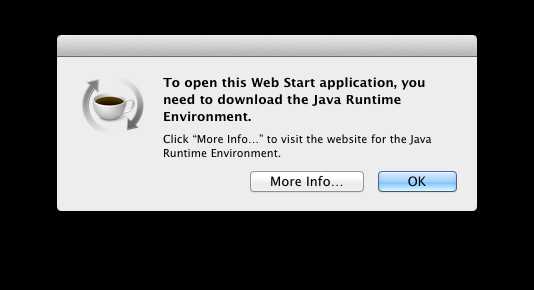
If that is the case, simply click on this knowledgebase link from Apple and follow the instructions. Afterward you should be able to launch the .jnlp files by double-clicking them. If you are still having trouble, launch them from the command line with the javaws utility:
javaws beta.jnlp
Once the BitMinter app fires up, you’ll see collapsable panes for each CPU and GPU. It is absolutely not worth mining bitcoins on your CPU at this point (though you could look into Litecoins to put your CPU to work). To start mining, click the Engine Start button for each of your GPU’s.
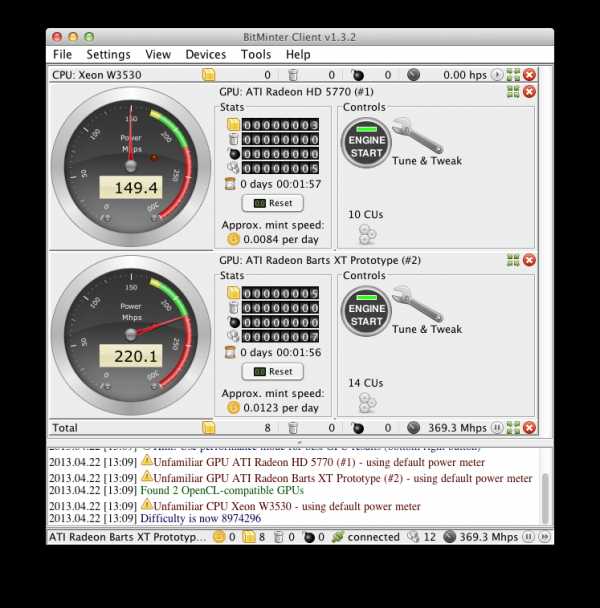
And you are now off and mining. You should see a Mh/s readout in the status bar. This is the number of hashes per second your hardware is performing. And, while the BitMinter miner is one of the easiest to try on OS X, it is worth noting a few downsides:
- Your performance will be much better with native command-line miners such as cgminer or bfgminer
- You are forced to use BitMinter as your mining pool when using the BitMinter miner
So far I’ve glossed over the idea of mining “pools”. While this is outside the scope of this article, know that you will need to pick a pool to participate in. Mining pools are collections of individuals mining common blocks of bitcoin transactions. This means you get paid small fractions every couple of hours instead of waiting months or even years for larger, rounder payouts. They have different payout methods and percentages, but BitMinter is a very good one with low fees (1% currently). You can read more about the available bitcoin pools here.
If you’ve tried out mining with BitMinter and it seems interesting to you, watch for future articles on using GUIMiner, cgminer and bfgminer on OS X. These utilities remove the Java requirement and offer performance improvements while also letting you participate in the pool of your choice.
blog.nwoolls.com
How to mine Bitcoin on Mac: Earn anonymous digital money
Bitcoin, the digital currency, is making headlines these days as it continues to increase in value and is accepted in an increasing number of retailers and other businesses. So how can you get in on this exciting new form of virtual cash? And is it worth the effort? Most importantly from our point of view, can Mac users get involved?
In this article we explain how to mine Bitcoin on Mac, and discuss whether that's a good idea. Read next: Apple predictions 2017
What is Bitcoin?
Bitcoin is a cryptocurrency that can be used to buy a variety of things, including online services, products... maybe even a house. It's akin to digital cash, in that it allows users to remain (mostly) anonymous in their transactions.
The currency has no central bank and no hierarchical overseers. There are no actual coins, either. Instead, Bitcoins are created by people using the computational power of their computers to 'mine' them.
While the whole thing might sound a bit wacky, in the last few years the value of Bitcoins has increased at a phenomenal rate. Just recently a Bitcoin become worth more than an ounce of gold; at time of writing it's over £2,000.
For more information on Bitcoin mining, take a look at this article by our colleagues at Tech Advisor.
How are Bitcoins made?
Creating a Bitcoin requires the solving of complex computational problems. This is done through software that uses the GPU of a PC (or Mac) to essentially keep chipping away at answers until it finds the right one.
While this might sound easy - and when Bitcoin first appeared back in 2008 it was certainly easier - these days the complexity of the problems are such that the power needed to crack them is substantial.
Because of this it's now virtually impossible to create Bitcoin without serious, dedicated hardware, or through people joining together in pools to share their resources and rewards.
How to use a Mac to make Bitcoin
Before you delve too far into the Bitcoin scene it's worth considering the fact that's it's very difficult to make money creating Bitcoin. In fact, due to the cost of electricity and any additional hardware you might purchase (not to mention replacing Macs whose GPUs burn out due to excessive use) you could make a net loss.
To have any chance of making a profit you'll need a powerful machine, along the lines of a MacBook Pro or a higher-end iMac such as the iMac with 5K display. You could theoretically use a MacBook Air or Mac mini but due to the lower-powered GPUs found in those devices it's not advisable. For more advice, read our best Mac buying guide and best Mac deals.
If your curiosity can't be abated, and you're still eager to proceed, we'll show you how to get involved.
Creating a Wallet
The first thing you'll need to do is create a Bitcoin wallet. This is necessary as it will be where you store any Bitcoin that you create, buy, or receive.
You'll find a wide range of wallet providers on the bitcoin.org website, alongside further details of how the process works.
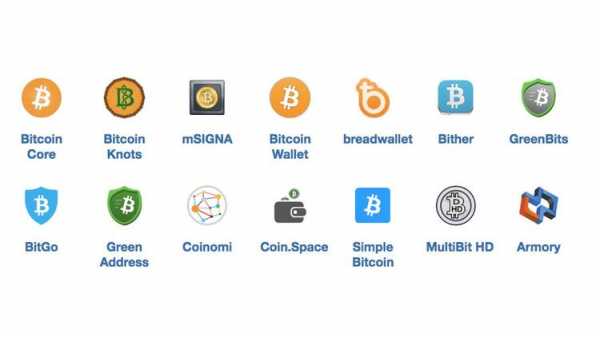
One very important thing is to ensure that you have offline backups of your wallet, and that you keep the details of your account somewhere safe. If you lose your password or your account is hacked, then your money is gone. It's the same as losing your wallet or purse in real life. Cash just doesn't come back.
Bitcoin.org provides a comprehensive guide to securing your wallet, and we suggest you read it fully.
Joining a pool
Once you've set up your wallet you'll want to join a pool. Again there are a wide range to choose from; the biggest ones are almost exclusively in China.
Ones to consider are F2Pool, Slushpool and BTCC.

Each pool will have different transaction costs (or possibly none at all), so be sure to check out a few before you commit.
Mining Software
Finally you'll want to install the mining software itself. Again there are a number of options, but a good starting place for those new to Bitcoin mining is MacMiner.
Will I make money?
Now this is a tricky question. The way pools work does indeed spread the load across a wide network, but there's no guarantee of any steady income.
Each pool will display its Hashrate somewhere on the site, and this is an indicator of how often Bitcoins are mined. The higher the number the more chance of a regular payout.
As we stated earlier, without high-end, powerful kit you're going to struggle to get much out of a Bitcoin pool, as the amount of computational capability you'll be adding to the pot is small.
As an experiment it might be fun, but keep an eye on your electricity bills and the temperature of your Mac, as both could suddenly prove quite expensive. Read next: Bitcoin and beyond: Which banks are investing in the blockchain?
www.macworld.co.uk
Bitcoin Mining Software Mac Os X
Learn about the best Bitcoin mining software in the most comprehensive guide available on the internet. Examples of the best Bitcoin mining software for Windows, Linux and Mac OSX: © 2018 Bitcoinx.com | SEO by Forcestream Last updated on July 25th, 2016 at 04:21 pm Are you thinking of joining the Bitcoin mining universe? In case you don’t know, you can either mine on your own or as. Is Bitcoin mining profitable? Should I invest in BitCoin?
The answer is subjective, it depends where you live and what type of hardware you own. BitCoin mi The bitcoin network is a peer-to-peer payment network that operates on a cryptographic protocol. Users send and receive bitcoins, the units of currency, by. MultiMiner is a desktop application for crypto-currency mining and monitoring on Windows, Mac OS X and Linux. MultiMiner simplifies … Minera is a complete web frontend to manage and monitor Bitcoin/Altcoins mining devices like Gridseed, Zeus Miner, Rockminer, Antminer, etc. Here are pictures of a few of my rigs: 10 steps to implement and deploy your Bitcoin Mining Rigs. Below are the 10 steps to getting your bitcoin mining rigs running. Graphics cards AMD (ATI) To get the maximum performance use the 2.1 release of the ATI Stream SDK. 2.2 wastes CPU time, and 2.3/2.4 drop mining performance by 5 … ClaimBitcoin is the Bitcoin generator that everyone has been waiting for. Currently it is the only working Bitcoin generator out there, and at the moment it can. How to get BitCoin? You’ll have to either invest in it by buying or build a rig to mine it. BitCoin may be the most popular digital currency but it is gett Setup with the USB bitcoin miner to the USB powered hub with fan. USB hub must be at lest 1.

5 – 2.

0 amps. Also the Rpi heatsink and fan. You need this heatsink and. What is Bitcoin Knots? Bitcoin Knots is a derivative of Bitcoin Core (since 2011 December) with a collection of improvements backported from … Decide on your hashing hardware, calculate your profitability, and download mining software with this essential guide to setting up a bitcoin miner. Find out how to block JavaScript-based Bitcoin mining scripts in web browsers using the hosts file of your operating system. 1. Install Bitcoin-Qt Since version 0.9, Bitcoin-Qt was renamed to Bitcoin Core t o reduce confusion between Bitcoin-the-network and Bitcoin-the-software. Bitcoin Armory Secure Wallet is a Python-based fully-featured bitcoin wallet software. Find out how this open-source software works today in our Armory wallet review. Latest OS X El Capitan update brings stability and performance improvements to Macs, including enterprise fixes. Want to learn how to mine bitcoins? First, mining bitcoins is done via SHA256. 26/04/2016 · Note: The successor to OS X 10.
10 Yosemite, OS X 10.11 El Capitan, can be downloaded from the Mac App store.
It introduces a ton of new features including a … Bitcoin is a pseudonymous, decentralized electronic currency, and it has been designed in such a way that it functions similarly to physical commodity money, such as.
All the recent media attention on Bitcoin inspired me to learn how Bitcoin really works, right down to the bytes flowing through the network. Normal people use. Get the latest news and analysis in the stock market today, including national and world stock market news, business news, financial news and more. Jaxx is the best wallet for Bitcoin, Ethereum, and dozens of other cryptocurrencies.

Download available on iOS, Android, Mac, PC, Linux and Chrome Direct Youtube link. New Release – Version 2.0 – CPU Mining Software. Lately, I’ve been trying to earn some money by mining the Bitcoin alternatives, Quarkcoin.
Learn about the best Bitcoin mining software in the most comprehensive guide available on the internet. Examples of the best Bitcoin mining software for Windows, Linux and Mac OSX: © 2018 Bitcoinx.com | SEO by Forcestream Last updated on July 25th, 2016 at 04:21 pm Are you thinking of joining the Bitcoin mining universe? In case you don’t know, you can either mine on your own or as. Is Bitcoin mining profitable?

Should I invest in BitCoin?
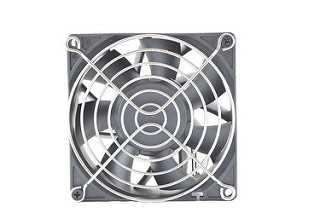
The answer is subjective, it depends where you live and what type of hardware you own. BitCoin mi The bitcoin network is a peer-to-peer payment network that operates on a cryptographic protocol. Users send and receive bitcoins, the units of currency, by. MultiMiner is a desktop application for crypto-currency mining and monitoring on Windows, Mac OS X and Linux. MultiMiner simplifies … Minera is a complete web frontend to manage and monitor Bitcoin/Altcoins mining devices like Gridseed, Zeus Miner, Rockminer, Antminer, etc.
Here are pictures of a few of my rigs: 10 steps to implement and deploy your Bitcoin Mining Rigs. Below are the 10 steps to getting your bitcoin mining rigs running. Graphics cards AMD (ATI) To get the maximum performance use the 2.
1 release of the ATI Stream SDK. 2.2 wastes CPU time, and 2.
3/2.
4 drop mining performance by 5 … Learn about the best Bitcoin mining software in the most comprehensive guide available on the internet. Examples of the best Bitcoin mining software for Windows, Linux and Mac OSX: © 2018 Bitcoinx.com | SEO by Forcestream Last updated on July 25th, 2016 at 04:21 pm Are you thinking of joining the Bitcoin mining universe? In case you don’t know, you can either mine on your own or as. Is Bitcoin mining profitable?
Should I invest in BitCoin? The answer is subjective, it depends where you live and what type of hardware you own. BitCoin mi The bitcoin network is a peer-to-peer payment network that operates on a cryptographic protocol. Users send and receive bitcoins, the units of currency, by.
MultiMiner is a desktop application for crypto-currency mining and monitoring on Windows, Mac OS X and Linux. MultiMiner simplifies … Minera is a complete web frontend to manage and monitor Bitcoin/Altcoins mining devices like Gridseed, Zeus Miner, Rockminer, Antminer, etc. Here are pictures of a few of my rigs: 10 steps to implement and deploy your Bitcoin Mining Rigs.
Below are the 10 steps to getting your bitcoin mining rigs running. Graphics cards AMD (ATI) To get the maximum performance use the 2.1 release of the ATI Stream SDK. 2.2 wastes CPU time, and 2.3/2.4 drop mining performance by 5 …
kimstamp.com


